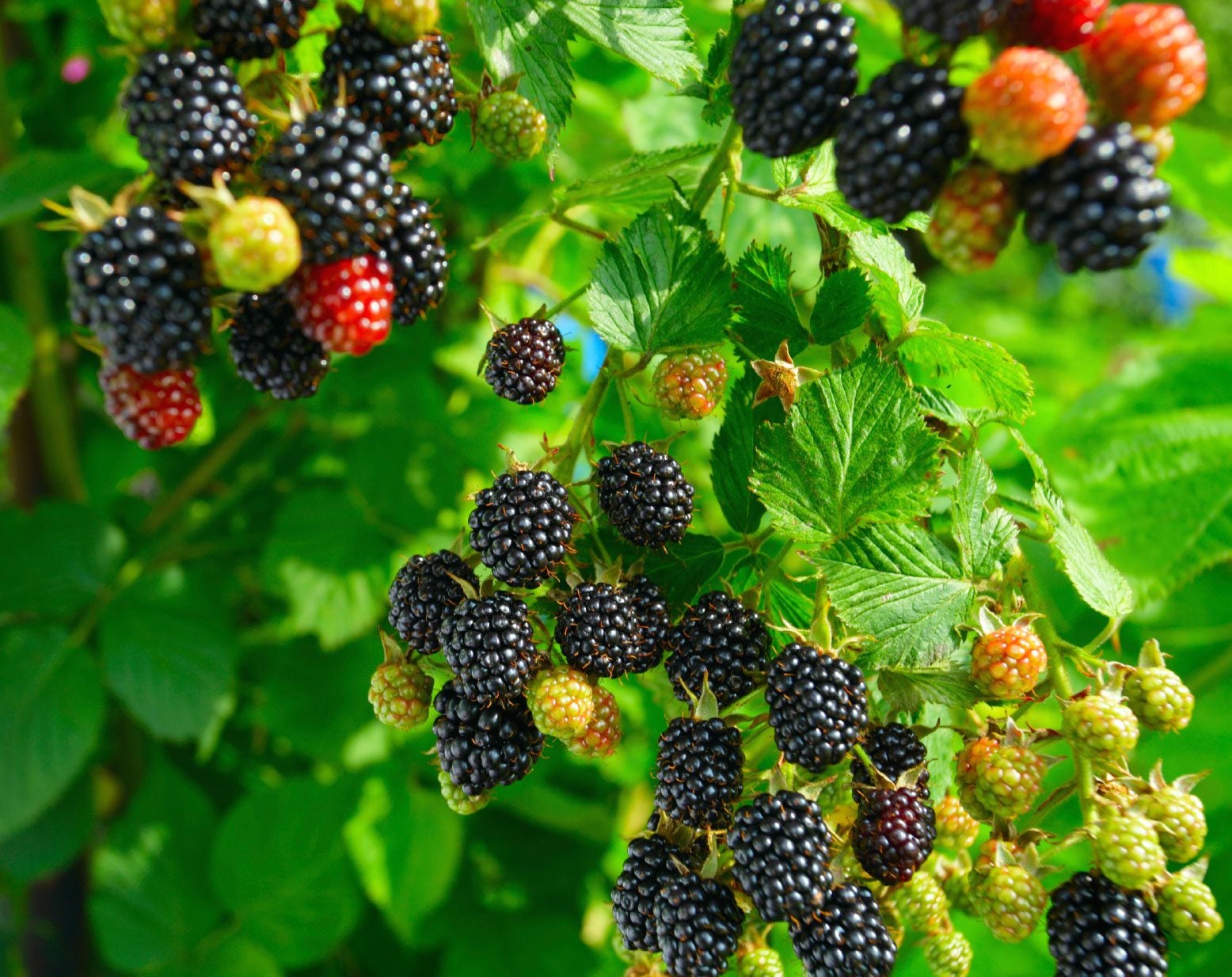The Blackberry Bush: A Thorny Delight
The blackberry bush, a ubiquitous sight in many parts of the world, is a fascinating plant with a rich history and a complex character. Its tangled vines, laden with juicy, dark berries, offer a wild and rewarding harvest for those who dare to navigate its thorny defenses. This article will delve into the various aspects of the blackberry bush, from its botanical characteristics and cultivation methods to its culinary uses and cultural significance.
Botanical Characteristics
The blackberry bush belongs to the genus Rubus, which encompasses a diverse group of plants, including raspberries, loganberries, and dewberries. Blackberries are typically classified as either erect or trailing. Erect varieties grow upright and can reach heights of several feet, while trailing varieties sprawl along the ground or over other plants.

Blackberry bushes are characterized by:
Woody stems:
These stems, often referred to as canes, are typically biennial, meaning they take two years to complete their life cycle.
Thorns:
These sharp spines provide protection from herbivores and can make harvesting a challenging endeavor.
Compound leaves:
These leaves consist of several leaflets arranged along a central stalk.
White or pinkish flowers:
These flowers, which bloom in spring or early summer, are typically arranged in clusters.
Aggregate fruits:
The blackberries themselves are not single fruits but rather clusters of small drupelets, each containing a single seed.
Cultivation
Cultivating blackberry bushes can be a rewarding experience, but it requires patience and a bit of know-how. Here are some key considerations:
Choosing a location:
Blackberries thrive in full sun but can tolerate some shade. They prefer well-drained soil that is rich in organic matter.
Preparing the soil:
Before planting, amend the soil with compost or other organic matter to improve drainage and fertility.
Planting:
Plant blackberry bushes in early spring or fall. Space plants according to variety and growth habit.
Pruning:
Regular pruning is essential for maintaining healthy and productive bushes. This typically involves removing old canes after they have fruited and thinning out new canes to encourage vigorous growth.
Pest and disease control:
Blackberries can be susceptible to various pests and diseases, including aphids, mites, and fungal diseases. Monitor plants regularly and take appropriate action to control infestations.
Harvesting
Blackberries are typically ready for harvest in late summer or early fall. The berries should be fully ripe, soft, and easily pulled from the stem. It is best to harvest berries in the morning when they are cool and less likely to be damaged.
Culinary Uses
Blackberries are a versatile fruit with a wide range of culinary uses. They can be enjoyed fresh, frozen, or processed into various products. Here are a few popular ways to use blackberries:
Fresh:
Enjoy blackberries straight from the bush or add them to salads, yogurt, or cereal.
Jams and jellies:
Blackberries make excellent jams and jellies due to their high pectin content.
Pies and pastries:
Blackberry pies, cobblers, and crumbles are classic summer desserts.
Wines and liquors:
Blackberries can be used to make delicious wines, liqueurs, and cordials.
Syrups and sauces:
Blackberry syrup can be used to top pancakes, waffles, and ice cream, while blackberry sauce is a perfect accompaniment for grilled meats and poultry.
Cultural Significance
The blackberry bush has a long and rich history, with cultural significance dating back to ancient times. In many cultures, blackberries have been associated with:
Abundance and fertility:
The prolific nature of the blackberry bush has often been seen as a symbol of abundance and fertility.
Wildness and freedom:
The thorny and untamed nature of the blackberry bush has been associated with wildness and freedom.
Healing properties:
Blackberries have been used in traditional medicine for centuries to treat various ailments.
Environmental Benefits
Blackberry bushes also provide several environmental benefits, including:
Wildlife habitat:
They provide food and shelter for a variety of wildlife, including birds, mammals, and insects.
Soil erosion control:
The dense root systems of blackberry bushes help to prevent soil erosion.
Pollinator support:
Blackberry flowers attract pollinators such as bees and butterflies, which are essential for the health of the ecosystem.
Challenges and Considerations
While blackberry bushes offer many rewards, they also present some challenges:
Invasive potential:
Some blackberry varieties can be invasive, spreading aggressively and crowding out native plants.
Thorns:
The thorns on blackberry bushes can make harvesting and maintaining the plants difficult and sometimes painful.
Pest and disease pressure:
As mentioned earlier, blackberry bushes can be susceptible to various pests and diseases.
Conclusion
The blackberry bush is a fascinating and complex plant that offers a unique combination of challenges and rewards. Its wild and untamed nature, combined with its abundance of delicious fruit, makes it a beloved plant for many. By understanding its botanical characteristics, cultivation requirements, and cultural significance, we can better appreciate and enjoy this thorny delight. Whether you are a seasoned gardener or simply an admirer of nature’s bounty, the blackberry bush is sure to captivate your interest.
I hope this comprehensive article provides you with valuable insights into the world of blackberry bushes.